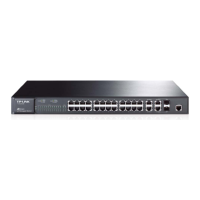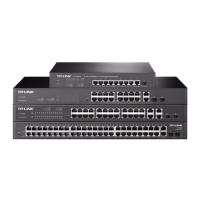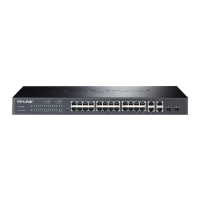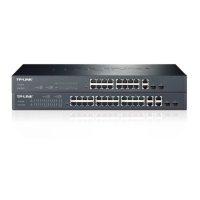Command Line Interface
4-230
4
spanning-tree link-type
This command configures the link type for Rapid Spanning Tree and Multiple
Spanning Tree. Use the no form to restore the default.
Syntax
spanning-tree link-type {auto | point-to-point | shared}
no spanning-tree link-type
• auto - Automatically derived from the duplex mode setting.
• point-to-point - Point-to-point link.
• shared - Shared medium.
Default Setting
auto
Command Mode
Interface Configuration (Ethernet, Port Channel)
Command Usage
• Specify a point-to-point link if the interface can only be connected to exactly
one other bridge, or a shared link if it can be connected to two or more bridges.
• When automatic detection is selected, the switch derives the link type from the
duplex mode. A full-duplex interface is considered a point-to-point link, while
a half-duplex interface is assumed to be on a shared link.
• RSTP only works on point-to-point links between two bridges. If you designate
a port as a shared link, RSTP is forbidden. Since MSTP is an extension of
RSTP, this same restriction applies.
Example
spanning-tree loopback-detection
This command enables the detection and response to Spanning Tree loopback
BPDU packets on the port. Use the no form to disable this feature.
Syntax
spanning-tree loopback-detection
no spanning-tree loopback-detection
Default Setting
Enabled
Command Mode
Interface Configuration (Ethernet, Port Channel)
Command Usage
• If Port Loopback Detection is not enabled and a port receives it’s own BPDU, then
the port will drop the loopback BPDU according to IEEE Standard 802.1W-2001
Console(config)#interface ethernet 1/5
Console(config-if)#spanning-tree link-type point-to-point

